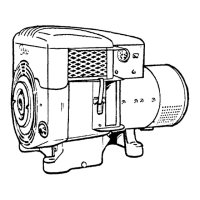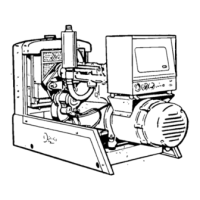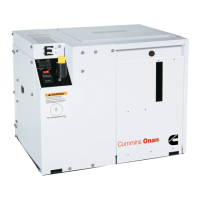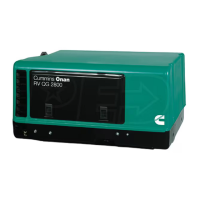CITY
WATER
COOLING
An optional method of engine cooling, in place of the
conventional radiator and fan, uses a constant
pressure water supply. This is referred to as CITY
WATER COOLING. There are two varieties of city
water cooling: the HEAT EXCHANGER SYSTEM and
STANDPIPE SYSTEM. See Figures 4 and 5.
C
EXPANSION
TANK
•HEAT EXCHANGER
• TO ENGINE
=FROM
ENGINE
DRAIN
SOLENOID
VALVE
(OPENS WHEN
PLANT IS RUNNING)
LOCKSHIELD
VALVE
(RATE OF FLOW)
WATER
IN
STRAINER
ANTI-SIPHON—
STAND
PIPE
SOLENOID VALVE
(OPFNS WHEN
PLANT IS RUNNING )
WATER
IN
DRAIN
—
FROM
ENGINE
:TO
ENGINE
— LOCKSHIELD VALVE
(RATE OF FLOW)
STRAINER
FIGURE 5. TYPICAL STANDPIPE SYSTEM
The STANDPIPE SYSTEM uses a mixing or temper-
ing tank. Cooling water that circulates through the
engine mixes with a source of cool "raw" water. The
"raw" water supply must be free of scale forming lime
or other impurities.
FIGURE 4. TYPICAL HEAT EXCHANGER SYSTEM
The HEAT EXCHANGER provides fora closed engine
cooling system. Engine coolant flows through a tubed
chamber, keeping the coolant separate from the cool
"raw" water supply. The coolant chamber must be
filled for operation, as for a radiator cooled set.
On both systems use flexible pipe .for connecting
water supply and outlet flow pipes to engine. Pipe the
outlet flow to a convenient drain. Install an electric
solenoid valve and a rate of flow valve in the water
supply line. The electric solenoid valve opens and
allows water flow through the system only when the
plant operates. The rate of flow valve, either
automatic or manual, provides for the proper flow rate
to the engine. Adjust the flow to maintain water
temperature between 165 degrees and 195 degrees
while viewing the water temperature gauge.
Before filling cooling system checlc all hardware for security. This
includes hose clamps, capscrews, fittings and connections. Use
flexible coolant lines wilh heat exchanger, standpipe or remote
mounting radiator.
WATER
JACKET
HEATER
(Optional)
This heater is installed to maintain an elevated engine
temperature in lower ambient temperature
applications. It heats and circulates engine coolant,
and is thermostatically controlled (Figure 19).
12

